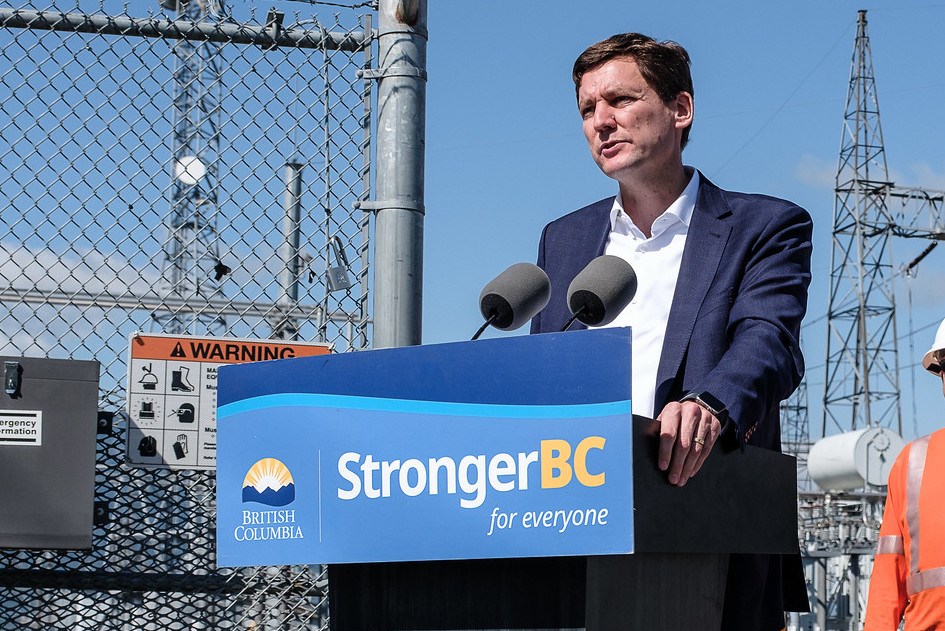Provincial government changes are usually preceded by a period of intense animosity towards incumbents.
This can be particularly complicated for governments when the leader of the party that holds power was not elected by the people. Ujjal Dosanjh in British Columbia in 2001 – and more recently, Heather Stefanson in Manitoba last year – were premiers who led administrations briefly and commanded parties to election losses.
Other seemingly caretaker premiers have done better in their first “real” campaign. In Alberta, Alison Redford and Danielle Smith won elections in 2012 and 2023 after securing the leadership of their parties. It is still unclear what will happen in British Columbia, where the province’s premier, BC New Democratic Party (NDP) Leader David Eby, faces a challenge from John Rustad and the Conservative Party of BC.
Sonia Furstenau of the BC Greens will lead her party for the second time in a provincial campaign. Furstenau will go through the same experience of Jane Sterk, who debated in 2009 and 2013 against different leaders for the BC Liberals (Gordon Campbell and Christy Clark) and the BC NDP (Carole James and Adrian Dix).
We recently re-asked our battery of questions on issue management and leadership traits to take a last look at the perceptions of the electorate before the campaign begins. Across British Columbia, Eby holds the upper hand over Rustad on eight issues: health care (37 per cent to 28 per cent), education (35 per cent to 25 per cent), transportation projects (34 per cent to 26 per cent), dealing with municipal governments (34 per cent to 28 per cent), child care (32 per cent to 22 per cent), seniors care (32 per cent to 25 per cent), housing, poverty and homelessness (35 per cent to 29 per cent) and energy (32 per cent to 27 per cent).
The gap is narrower on five other issues. Eby is slightly ahead of Rustad on creating jobs (35 per cent to 31 per cent), the economy (34 per cent to 33 per cent), accountability (33 per cent to 29 per cent) and managing the province’s finances (33 per cent to 31 per cent), while Rustad is first on crime and public safety (35 per cent to 31 per cent). On the environment, a third of British Columbians prefer Furstenau (33 per cent) to Eby (26 per cent) or Rustad (20 per cent).
The way in which British Columbians aged 18-34 are reacting to Rustad is very different from elections past and could help define this year’s outcome. The province’s youngest voters used to gravitate towards BC NDP leaders on issues like housing and finances. This month, Rustad leads Eby among this demographic on housing, homelessness and poverty (34 per cent to 26 per cent), and the economy and jobs (34 per cent to 27 per cent).
Compared to the numbers we posted in June, Eby has gained on four characteristics, including being a good speaker and communicator (58 per cent, up six points), having a vision for the future (51 per cent, up seven points), understanding the problems of residents (47 per cent, up six points) and being a strong and decisive leader (46 per cent, up six points).
Rustad also had a satisfactory end of the summer, with double-digit increases on these same traits: having a vision for the future (47 per cent, up 14 points), being a good speaker and communicator (also 47 per cent, up 14 points), understanding the problems of residents (43 per cent, up 11 points) and being a strong and decisive leader (42 per cent, up 12 points).
Furstenau’s numbers also grew, but not near the level that her rivals are enjoying. Her best showing is on being honest and trustworthy (39 per cent, up five points), higher than Rustad (36 per cent) but lower than Eby (43 per cent).
Exposure to the three party leaders will grow in the next few weeks, and it will be important to watch how these traits move. There are two areas where Eby fares better than Rustad: sharing the values of residents (40 per cent to 36 per cent) and inspiring confidence (43 per cent to 38 per cent). The BC NDP will try to paint a picture of a province that will become meaner if the BC Conservatives take over. However, a decline in trust for an incumbent head of government during the campaign would be fatal.
There is another crucial nugget on the data: Rustad is virtually tied with Eby on being a good economic manager (39 per cent to 38 per cent). If the election becomes a referendum on financial growth and fiscal solvency, Rustad may be able to connect with the large group of voters aged 55 and over who are content with the BC NDP at this stage.
In surveys I conducted during the 2012 United States presidential campaign, Republican nominee Mitt Romney was consistently ahead of Democratic incumbent Barack Obama on economic management. Twelve years ago, the American people were more interested in vision and leadership than in productivity and debt. Romney did better than John McCain in 2008, but still lost the election. In British Columbia, where 55 per cent of residents cite either housing or the economy as the most important challenges, the three party leaders will seek to establish an emotional connection with voters that goes beyond numbers.
Mario Canseco is president of Research Co.
Results are based on an online study conducted from Sept. 9 to Sept. 11, 2024, among 802 adults in British Columbia. The data has been statistically weighted according to Canadian census figures for age, gender and region in British Columbia. The margin of error—which measures sample variability—is +/- 3.5 percentage points, 19 times out of 20.



